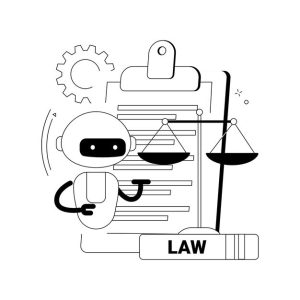Artificial Intelligence has disrupted content creation and made it more efficient and inventive in fields such as marketing and entertainment. Nevertheless, such a rapid development has also turned into the spread of AI-created harmful content, including deepfakes, misinformation, hate speech, and cyber scams. Seizing the opportunities presented by these tools to fabricate misleading and risky material, governments, legal bodies, and technology companies need to quickly adopt legal measures to counter the new threats.
In this blog, we discuss the emerging AI misuse issue, examine the used and suggested AI content regulation laws, and mention the effective legal frameworks that protect individuals and society.
The Rising Tide of AI-Generated Harmful Content
It is a Pandora’s box opened by AI’s mimicking of human behavior. Exponentially large deep learning models such as GANs (generative adversarial networks) and large language models are now capable of creating realistic text, audio and video content. Although most of these applications are benign and even helpful, others are weaponized to:
- Spread disinformation and fake news
- Create deepfake pornography and impersonations
- Conduct phishing and fraud schemes
- Incitement of violence or hatred against people or a group
Such AI-created harmful content can ruin reputations, influence the public mind, and incite the physical world. It has a global span and its rate of evolution outstrips legal systems to check it.
Why Legal Intervention is Critical
Unlike conventional content moderation, AI-generated content is more difficult to track and disseminates more rapidly than traditional content. In addition, AI-generated content is more persuasive. The safety nets placed on the platforms to self-moderate have proven quite ineffective, especially when the profit gainstreams clash with the ethical duties.
Legal intervention is therefore necessary to ensure clear accountability, delineation and punishment for misuse of AI. The difficulty is in formulating technologically-driven and adaptable legislation which can account for AI’s constantly changing nature.
Current Legal Landscape: Fragmented and Lagging
There is a fragmented response in terms of law to the harmful content from AI. Deepfake Acts, or proposals regarding AI-based content regulation, have been adopted by some countries, but worldwide mechanisms remain wanting.
United States
In the U.S., the legal suit against the content produced by AI is mostly backed by existing laws, i.e.
- Defamation and libel statutes
- Non-consensual deepfakes revenge porn laws
- Fraud and impersonation statutes
However, enforcement is limited. Federal legislations such as DEEPFAKES Accountability Act and AI Bill of Rights, which are in the process of being debated, are intended to bring more specific regulations.
European Union
The EU AI Act is one of the most daring regulatory undertakings offering a risk-based approach to AI technologies. It classifies applications into unacceptable, high, and low risks and imposes a more stringent requirement for harmful content.
Asia and Other Regions
Watermarking and disclosure of synthetic media requires countries such as China and Singapore to establish laws. Whereas being proactive, enforcement and international alignment are hindrances.
Key Legal Strategies to Combat Harmful AI Content
For successful countering of AI created harmful content, an integrated legal strategy is needed. There are several strategies hitting their stride here:
1. Mandating Transparency and Disclosure
Legislation may mandate disclosure of the artificial nature of AI-generated content by their creators. This may include:
- Watermarks on AI-generated videos
- Labels on AI-written articles or chatbot responses.
- Advertising and political campaigns disclosures
Such transparency enables the users to distinguish between real and fake hence limiting the spreading of misleading content.
2. Establishing Liability Frameworks
The present laws find it difficult to establish the person liable. the AI developer, platform that holds the content, or the consumer of the data. Modern legal strategies advocate for:
- Community content liability models between content creators and platforms
- Liability on the part of developers to ensure that there is no foreseeable misuse.
- Civil and criminal sanctions against malign individuals
Pointed accountability guidelines discourage bad practices and ease better precautions when constructing AI.
3. Investing in Digital Forensics and AI Detection Tools
The law enforcement agencies and courts require the tools for detecting harmful, AI-generated content and exposure. Legal reforms can:
- Fund AI detection technologies.
- Standardize digital evidence protocols
- Establish AI forensics units in divisions of cybercrime.
This increases the likelihood of successful prosecution and justice to victims.
4. Updating Privacy and Consent Laws
Most of the time, unlawful use of likeness is deeply involved in deepfakes and synthetic voice imitations. Broader privacy rules leading to biometric and digital identity protections can provide better redress. This includes:
- Explicit consent of one’s voice or image in synthetic creation.
- Right to the removal or takedown of the nonconsensual AI content.
- Sanctions on identifiable human violations
5. Global Cooperation and Standardization
Considering that the content produced by AI is borderless, nations have to collaborate for global benchmarks. International legal strategies may involve:
- Ethics in AI and prevention of misuse agreements.
- Consensus regulations on labeling and moderation of content
- Inter-state cybercrime treaties providing for AI abuse.
Collaborative governance facilitates mitigating gaps that real rogues use between jurisdictions.
Role of Tech Companies in Legal Compliance
That is not the solution to the problem – tech firms and AI developers must act with responsibility. This includes:
- Introducing content moderation that is based on AI.
- Introducing robust user reporting mechanisms
- Following disclosure and takedown requirements
- A bias, manipulation, or misuse potential auditing of AI models
Proactive compliance also creates trust while minimizing the chances of suit and reputational loss.
Conclusion: Balancing Innovation and Protection
AI-generated content is not going anywhere – and it promises great returns and dire threats. To contain the dangers of AI dangerous content, legal systems need to significantly evolve and embrace broad, adaptable and enactable strategies.
The aim is not to kill innovativeness but to strike a balance between freedom of expression and harm prevention. Whether by means of a new regime of transparency laws, refreshed privacy rules or in international collaboration, the way ahead has to be one where the law catches up with the pace and cunning of new AI threats.
Wondering how to create AI-compliant strategies or legal policies? Call on digital law experts to save your business and community from the influx of dangerous AI content.










